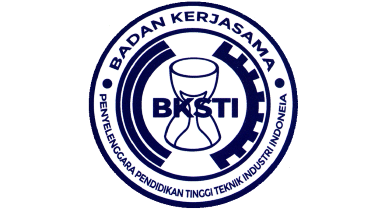Penerapan Metode Taguchi untuk Meningkatkan Mutu Elastisitas dan Rekat Malam Menggunakan Media Kompor Portable Berbasis Arduino
DOI:
https://doi.org/10.30737/jatiunik.v3i2.843Keywords:
Arduino Portable Stove, Elasticity Night Paste, Orthogonal Matrix, Taguchi EksperimentAbstract
This research explains the existence of elasticity and night adhesion quality with experiments of the parameters of arduino sensor-based stove design. This study uses a pure experimental design with the Taguchi method, consisting of 4 controlled factors, each of which has 2 levels, the number of levels and the existing factors can be determined by the number of rows for the orthogonal array matrix, which is 8 so that the appropriate orthogonal array is L8 (24). After the Taguchi experiment on Pemalang written batik, the influence of the mean value and the effect of the SNR value, which means that all factors are significant to the elasticity and viscosity of the night and the results of confirmation experiments for the average value and SNR can be accepted based on consideration of the interval of confidence , thus for optimal level setting, 15 minutes of coloration is obtained, the heating value of the arduino sensor-based briquette stove flame is 5993,068 cal / g, the heating value of the arduino sensor-based bioethanol stove is 5432,541 cal / g and 10 % and an increase in quality for the power of elasticity and adhesive is 1.44 or an increase of 17.80%.
Â
Penelitian ini menjelaskan adanya mutu elastisitas dan rekat malam dengan eksperimen dari parameter perancangan kompor berbasis sensor arduino. Penelitian ini menggunakan rancangan eksperimental murni dengan metode taguchi, terdiri 4 faktor terkendali masing-masing memiliki 2 level, Jumlah level dan faktor yang ada dapat ditentukan jumlah baris untuk matriks orthogonal array yaitu 8 sehingga orthogonal array yang sesuai adalah L8(24). Setelah dilakukan eksperimen taguchi terhadap batik tulis pemalang maka pengaruh nilai rata-rata (mean) dan pengaruh nilai SNR, yang berarti semua faktor signifikan terhadap daya elastisitas dan rekat malam serta hasil eksperimen konfirmasi untuk nilai rata-rata dan SNR dapat diterima berdasarkan pertimbangan selang kepercayaan, dengan demikian untuk setting level optimal dihasilkan pewarnaan waktu 15 menit, nilai kalor pada nyala api kompor briket berbasis sensor arduino 5993,068 kal/g, nilai kalor pada nyala api kompor bioethanol berbasis sensor arduino adalah 5432,541 kal/g dan Perekat 10% dan terjadi peningkatan kualitas sebesar untuk daya elastisitas dan rekat malam adalah 1,44 atau terjadi peningkatan sebesar 17,80 %.
Â
Â
References
cnbcindonesia, “Kenaikan Penjualan Ritel Maret 2019 Tertinggi Dalam 3 Tahun,†cnbcindonesia.com, 2019. [Online]. Available: https://www.cnbcindonesia.com/market/20190507112851-17-70931/kenaikan-penjualan-ritel-maret-2019-tertinggi-dalam-3-tahun. [Accessed: 02-Mar-2020].
S. Kannan, S. S. Kumaran, and L. A. Kumaraswamidhas, “Optimization of friction welding by taguchi and ANOVA method on commercial aluminium tube to Al 2025 tube plate with backing block using an external tool,†J. Mech. Sci. Technol., vol. 30, no. 5, pp. 2225–2235, 2016.
S. Dhanalakshmi, N. Mohanasundararaju, P. G. Venkatakrishnan, and V. Karthik, “Optimization of friction and wear behaviour of Al7075-Al2O3-B4C metal matrix composites using Taguchi method,†IOP Conf. Ser. Mater. Sci. Eng., vol. 314, no. 1, 2018.
A. P. Sasmito, J. C. Kurnia, T. Shamim, and A. S. Mujumdar, “Optimization of an open-cathode polymer electrolyte fuel cells stack utilizing Taguchi method,†Appl. Energy, vol. 185, pp. 1225–1232, 2017.
elizabeth astika Anindyajati, “Pengaruh asap pelelehan lilin batik (malam) terhadap struktur histologis trakea dan alveoli pulmo, jumlah eritrosit serta kadar hemoglobin mencit (mus musculus 1),†2007.
A. Malik, R. Retno, and A. Ayu, “Pengaruh Komposisi Malam Tawon Pada Pembuatan Batik Klowong Terhadap Kualitas Hasil Pembatikan,†Teknoin, vol. 22, no. 6, pp. 391–399, 2016.
S. Ghalme, A. Mankar, and Y. Bhalerao, “Integrated Taguchi-simulated annealing (SA) approach for analyzing wear behaviour of silicon nitride,†J. Appl. Res. Technol., vol. 15, no. 6, pp. 624–632, 2017.
E. Eskak, I. R. Salma, and H. Sumarto, “Peningkatan kecerahan dan daya rekat warna pada produk gerabah batik,†Prod. J. Desain Prod. (Pengetahuan dan Peranc. Produk), vol. 3, no. 1, pp. 1–7, 2017.
C. Rainer and M. Tietz, “Stirring Appetites in Design: A User Centered Product design Approach to Improve Environmental Health in Remote Indigenous Communities in Australia,†Des. Princ. Pract. An Int. J., vol. 3, no. 5, pp. 105–118, 2009.
Tamrin, “Pengembangan Tungku Briket Batubara Skala Rumah Tangga,†J. Agritech Fak. Teknol. Pertan. UGM, vol. 30, no. 4, pp. 250–256, 2010.
Apollo, M. Nuzul, L. O. Musa, and H. Nauwir, “Rancang Bangun Kompor Gas Berbahan Bakar Sekam Padi Sistem Kontinu Dengan Menggunakan Udara Pembakaran Alamiah,†J. Sinergi, vol. 10, no. 2, pp. 121–139, 2012.
H. Febriansyah, A. A. Setiawan, and K. Suryopratomo, “Optimasi Desain Kompor Cangkang Kelapa Sawit,†J. Teknofisika, vol. 2, no. 3, pp. 69–74, 2013.
M. I. N. A. Setyabudhi, Albertus Laurensius Yuzul, “Perancangan sistem kerja kompor ekonomis dengan bahan bakar oli bekas,†J. Tek. Ibnu Sina, vol. 2, no. 1, pp. 9–16, 2017.
R. Hadi, “Rancang bangun kompor biomassa berbahan bakar pelet kayu,†Universitas Gajah Mada, 2017.
A. Anam, Sugiono, D. Gunadi, and Dahrudin, “Pengaruh Dimensi Kompor Biomasa Terhadap Performansinya,†J. Tech. Eng., vol. 1, no. 1, pp. 19–24, 2017.
I. W. Joniarta and M. Wijana, “Pengaruh variasi besar lubang dan tebal plat terhadap boiling time, lama nyala dan laju pembakaran pada desain kompor biomassa tongkol jagung,†J. Din. Tek. Mesin, vol. 8, no. 1, pp. 46–51, 2018.
I. G. Nurhayata and I. G. Sudirtha, “Pengembangan Kompor Batik Listrik Otomatis Berbasis Mikrokontroller dengan Kontrol Sudut Fasa,†in Seminar Nasional Riset Inovatif, 2018, pp. 19–26.
T. Kivak, “Optimization of surface roughness and flank wear using the Taguchi method in milling of Hadfield steel with PVD and CVD coated inserts,†Meas. J. Int. Meas. Confed., vol. 50, no. 1, pp. 19–28, 2014.
H. Asyari, Umar, and A. P. Irawan, “Desain Prototipe Kompor Listrik Tenaga Surya,†J. Emit., vol. 19, no. 01, pp. 6–9, 2019.
M. B. Dwicaksono and C. Rangkuti, “Perancangan, Pembuatan, Dan Pengujian Kompor Energi Matahari Portabel Tipe Parabola Kipas,†J. Penelit. Dan Karya Ilm. Lemb. Penelit. Univ. Trisakti, vol. 3, no. 2, pp. 37–44, 2018.
D. Anggraini, S. K. Dewi, and T. E. Saputro, “Aplikasi Metode Taguchi Untuk Menurunkan Tingkat Kecacatan Pada Produk Paving,†J. Tek. Ind., vol. 16, no. 1, p. 1, 2017.
B. Harahap, T. Hernawati, and A. R. Hasibuan, “Analisa Mutu Minyak Kelapa Sawit dengan Metode Taguchi ( Studi Kasus Di PT . Sumber Sawit Makmur ),†Bul. Utama Tek., vol. 3814, pp. 81–91, 2018.
S. B. Uyyala and S. Pathri, “Investigation of tensile strength on friction stir welded joints of dissimilar aluminum alloys,†Mater. Today Proc., vol. 23, pp. 469–473, 2020.
A. Iswanto, A. J. M.Rambe, and E. Ginting, “Aplikasi Metode Taguchi Analysis Dan Failure Mode And Effect Analysis ( Fmea ) Untuk Perbaikan Kualitas Produk Di PT . XYZ,†Dep. Tek. Ind., vol. 2, no. 2, pp. 13–18, 2013.
N. Belavendram, Quality by Design: Taguchi Techniques for Industrial Exsperimentation. London: Prentice Hal, 1995.
F. Hussin, J. Ali, and M. S. Z. Noor, Kaedah Penyelidikan & Analisis Data SPSS. 2014.
R. A. Purnomo, Analisis Statistik Dengan SPSS. 2016.
D. R. Helsel, Statistics for Censored Environmental Data Using Minitab® and R: Second Edition. 2011.
Soporte técnico Minitab 18, “Minitab 18,†Www.Minitab.Com, 2019.
Downloads
Published
Issue
Section
License
Information regarding Copyright and Licensing at JATI UNIK as follows:
- Licensed Use of Non - Commercial Articles will be governed by the Creative Commons Attribution license, which is featured on the Creative Commons Attribution Non-Commercial Share A Like 4.0 International License.
- The author guarantees that the articles published through JATI UNIK are original and do not contain statements that violate the law do not violate others' rights are subject to copyright, which is held exclusively by the author and free from the rights of third parties. The author is allowed to quote from various sources used for research and not to harm any party.
- JATI UNIK disseminates articles published with the rules set by Creative Commons. UNIK JATI license allows users to copy, distribute, display, and work for non-commercial purposes. Users also need to connect authors and JATI UNIK with the distribution of articles in journals.
- The Author rights, namely copyrights, ownership rights, patents, rights to use the substance of articles in the future, rights to reproduce articles for personal purposes and not to be traded, rights to conduct personal archives, rights to contract used for the non-exclusive distribution of articles published in the form a book and acknowledge the initial publication of the article originating from JATI UNIK.
- Suppose articles published by the author through JATI UNIK are compiled with other authors. In that case, it is necessary to create a form containing the authority of all authors involved in the article's production by including the agreement agreed upon by all authors in the article.
- The next point is, the agreement can be terminated if the author or JATI UNIK violates the agreement and cannot make repairs to the customer within a maximum of 2 months after being given information asking for the violation to be corrected. If there is no violation of the agreement, the license will automatically terminate and affect UNIQUE JATI UNIK.
- Regarding royalties, so far, if it is following applicable legal regulations, the author will waive his right to collect royalties on articles that have been licensed by JATI UNIK.
- In publishing the article, the editorial process is successful. JATI UNIK will continue it. JATI UNIK has the right to adjust articles related to punctuation, spelling, capital letters, references used, and usage adapted to JATI UNIK. The author acknowledges that the article can be published and accessed free of charge by the public.
Deprecated: json_decode(): Passing null to parameter #1 ($json) of type string is deprecated in /home/ojs.unik-kediri.ac.id/public_html/plugins/generic/citations/CitationsPlugin.php on line 68















